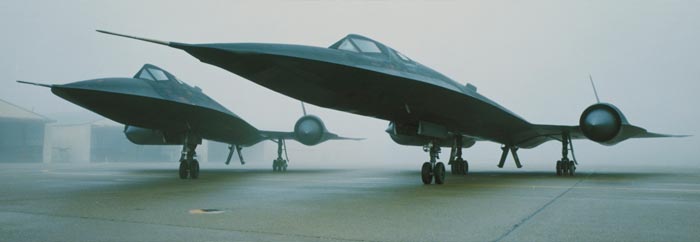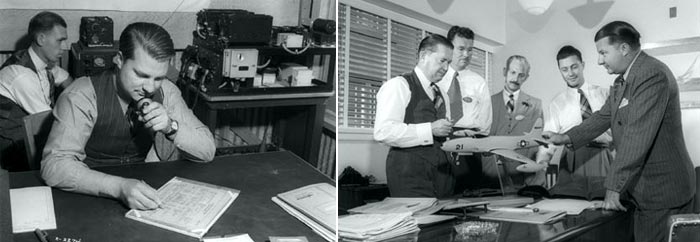
Clarence "Kelly" Johnson would have celebrated his 100th birthday three days ago if he still was with us, his name is pretty well known to anyone with an interest in aviation. He founded the legendary 'Skunk Works' department for Lockheed that designed under his command innovative and revolutionary aircraft like the U-2, F-104, SR-71 (photo above), F-117 and more. Apart from aeronautics he is famous for his administrative work and method that is mostly summarized by his motto: "Be quick, be quiet, and be on time." He also established a set of 'rules' that formed the modus operandi of his department and although specific in some areas, could be useful even today in a broad spectrum of fields. The rules first appeared when Skunk Works was working on the XP-80 in 1943 and were officially established in the early '50s.---

Kelly's 14 Rules:
1. The Skunk Works® manager must be delegated practically complete control of his program in all aspects. He should report to a division president or higher.
2. Strong but small project offices must be provided both by the military and industry.
3. The number of people having any connection with the project must be restricted in an almost vicious manner. Use a small number of good people (10% to 25% compared to the so-called normal systems).
4. A very simple drawing and drawing release system with great flexibility for making changes must be provided.
5. There must be a minimum number of reports required, but important work must be recorded thoroughly.
6. There must be a monthly cost review covering not only what has been spent and committed but also projected costs to the conclusion of the program. Don't have the books ninety days late and don't surprise the customer with sudden overruns.
7. The contractor must be delegated and must assume more than normal responsibility to get good vendor bids for subcontract on the project. Commercial bid procedures are very often better than military ones.
8. The inspection system as currently used by the Skunk Works®, which has been approved by both the Air Force and Navy, meets the intent of existing military requirements and should be used on new projects. Push more basic inspection responsibility back to subcontractors and vendors. Don't duplicate so much inspection.
9. The contractor must be delegated the authority to test his final product in flight. He can and must test it in the initial stages. If he doesn't, he rapidly loses his competency to design other vehicles.
10. The specifications applying to the hardware must be agreed to well in advance of contracting. The Skunk Works® practice of having a specification section stating clearly which important military specification items will not knowingly be complied with and reasons therefore is highly recommended.
11. Funding a program must be timely so that the contractor doesn't have to keep running to the bank to support government projects.
12. There must be mutual trust between the military project organization and the contractor with very close cooperation and liaison on a day-to-day basis. This cuts down misunderstanding and correspondence to an absolute minimum.
13. Access by outsiders to the project and its personnel must be strictly controlled by appropriate security measures.
14. Because only a few people will be used in engineering and most other areas, ways must be provided to reward good performance by pay not based on the number of personnel supervised.
Source: http://www.lockheedmartin.com
More on Clarence "Kelly" Johnson: http://en.wikipedia.org/wiki/Clarence_Johnson , http://www.nap.edu/
(images: Lockheed)